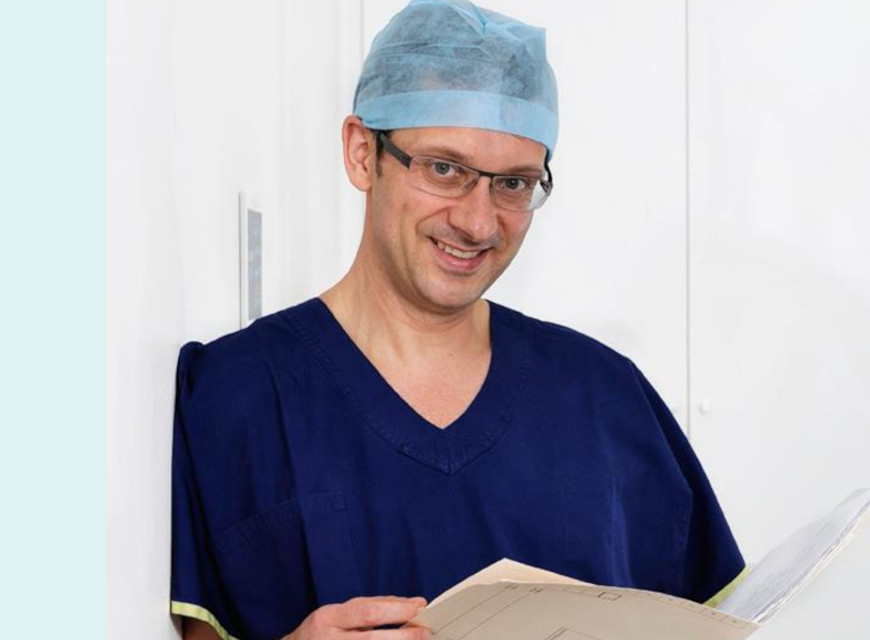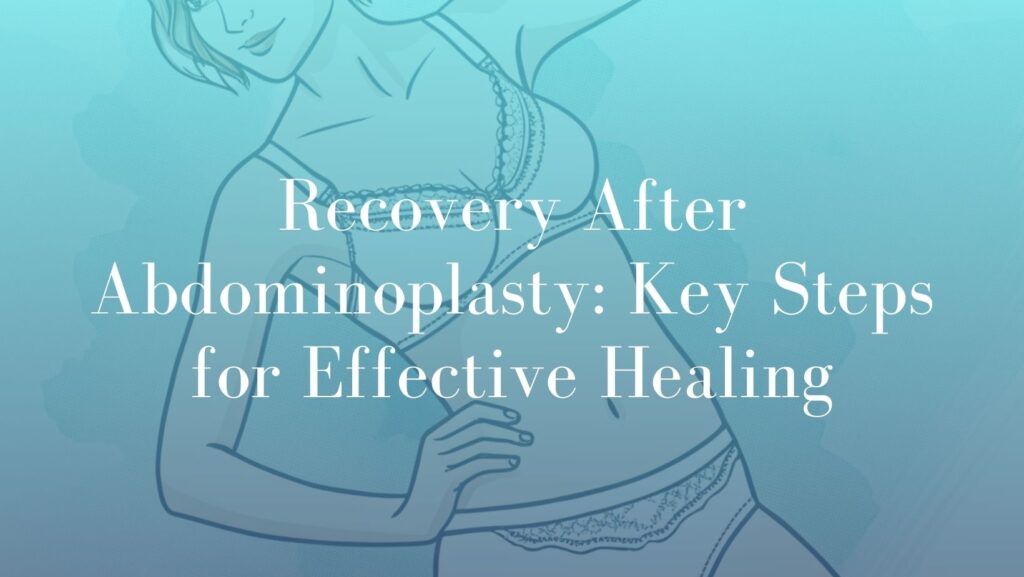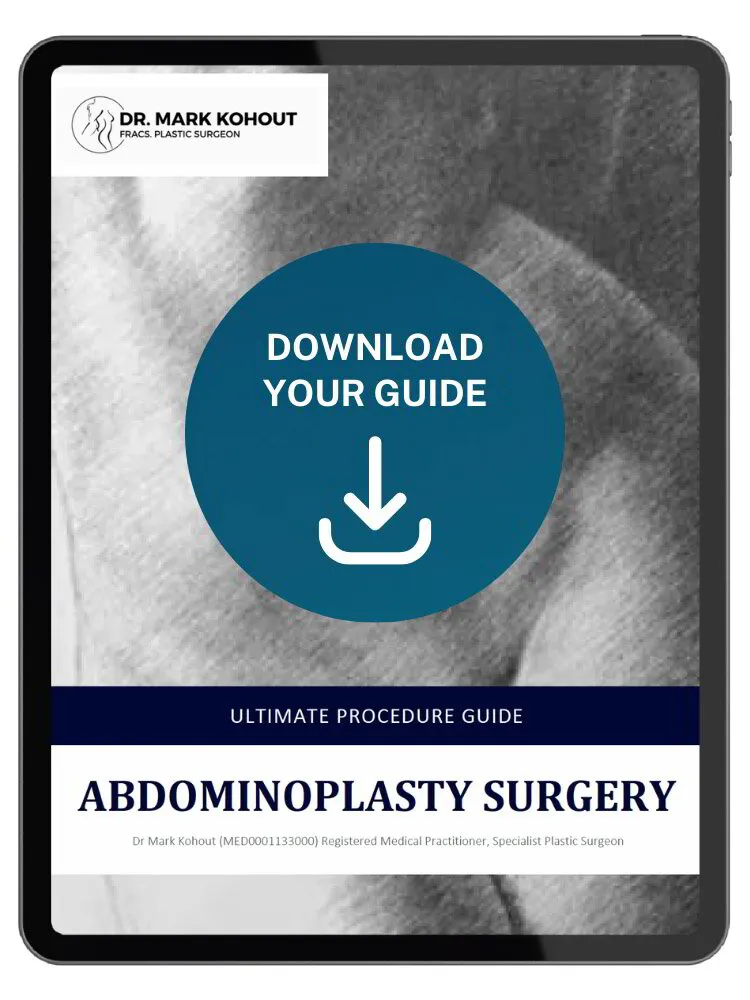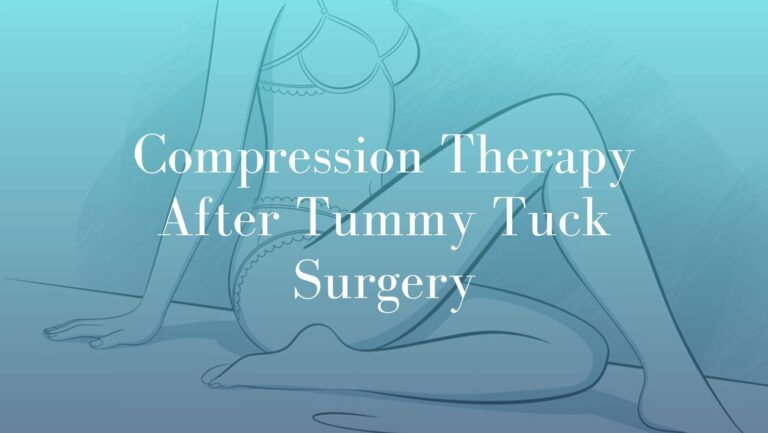
Recovery after abdominoplasty is a critical phase that significantly influences the final results of your surgery. Abdominoplasty, commonly referred to as a tummy tuck, is a cosmetic procedure designed to alter the abdomen’s appearance by removing excess skin and fat while often tightening the underlying muscles. This guide provides a detailed overview of what to expect post-surgery, how to care for yourself, and essential tips for a smooth recovery process.
The Recovery After Abdominoplasty Process: A Comprehensive Guide
1. The First Week of Recovery
The first week post-surgery is often the most challenging. Expect discomfort, swelling, and limited mobility:
-
- Days 1-2: Grogginess from anaesthesia and significant discomfort are common. Bandages will be in place, and drainage tubes may be used to prevent fluid accumulation. Pain medications prescribed by your surgeon can help manage discomfort and aid your recovery.
- Days 3-5: Pain typically begins to subside, but soreness and swelling may persist. Continue to take prescribed pain medications and keep incision areas clean and dry. Walking short distances can help improve circulation and reduce the risk of blood clots.
- Days 6-7: Many patients start to feel more comfortable moving around and may gradually increase their activity level. Most will be discharged from the hospital by this time, depending on individual recovery after an abdominoplasty progress. Ensure you have follow-up appointments scheduled for monitoring your healing.
2. Dos and Don’ts for Recovery
Following these guidelines will help ensure a smoother healing process:
Do:
-
- Adhere strictly to post-surgical care instructions provided by your surgeon.
- Keep incision areas clean and dry to prevent infection; use the recommended cleaning solutions and techniques.
- Wear your compression garment as directed to support healing and reduce swelling. This garment is crucial for maintaining your new abdominal shape.
- Engage in short, gentle walks to promote circulation and prevent blood clots. Walking can help alleviate discomfort and reduce the risk of complications.
- Prioritize rest to aid recovery after an abdominoplasty; listen to your body and avoid overexerting yourself.
Don’t:
- Engage in strenuous physical activities or lift heavy objects, as this can strain the surgical site and hinder healing.
- Smoke or consume alcohol, as both can complicate healing and increase the risk of complications.
- Submerge incisions in water until cleared by your surgeon; opt for sponge baths instead.
- Sleep on your stomach, which can strain abdominal muscles. Instead, sleep on your back or side with pillows for support.
- Skip follow-up appointments, which are crucial for monitoring your healing progress and addressing any concerns.
3. Managing Pain and Discomfort
Pain and discomfort are normal, particularly in the initial days. Your surgeon will guide you on managing pain, which may include:
-
- Prescription Pain Medications: Initially, these may be required, transitioning to over-the-counter options as you heal. Always follow your surgeon’s guidance regarding medication use.
- Cold Compresses: Applying cold compresses to the affected areas can help reduce swelling and numb the area, providing relief from discomfort.
- Deep Breathing Exercises: These can manage pain and prevent lung complications post-anaesthesia. Practice deep breathing to enhance lung capacity and promote relaxation.
- Alternative Pain Management: Gentle stretching, meditation, or relaxation techniques (once approved) may also ease discomfort. Exploring holistic methods can complement traditional pain management strategies.
Contact your surgeon if you experience severe or worsening pain, as this could indicate a complication requiring immediate attention.
4. Caring for Scars After Abdominoplasty
Scar care is essential for recovery; proper care can help minimize scarring:
-
- Keep incision sites clean and dry, following your surgeon’s instructions on wound care.
- Use silicone sheets, scar creams, or gels as recommended by your surgeon. These products may help improve the appearance of scars over time.
- Protect scars from the sun to prevent darkening; apply sunscreen or cover the area with clothing when exposed to sunlight.
- Once healed, gentle massage of the scars (as advised by your surgeon) may help improve their appearance. Regular massage can aid in breaking down scar tissue and promote collagen production.
While scarring is permanent, it often becomes less noticeable over time with proper care. Patience is crucial, as scars can take several months to a year to mature.
5. Emotional and Physical Support
Recovery involves both physical healing and emotional adjustment. It’s common to experience various emotions, including frustration and anxiety during this time. To support your emotional well-being:
- Stay Connected: Engage with friends and family for support. Sharing your experiences can help alleviate feelings of isolation.
- Engage in Light, Enjoyable Activities: Choose activities that can distract from discomfort and provide enjoyment. Reading, watching movies, or engaging in creative hobbies can enhance your mood.
- Consider Professional Help: If feelings of distress persist, consider seeking help from a mental health professional or joining a support group. Connecting with others who have undergone similar experiences can provide valuable insights and encouragement.
- Practice Self-Care: Focus on self-care strategies that promote relaxation and stress relief, such as mindfulness, gentle yoga, or taking warm baths.
Patience is vital as your body heals; recovery takes time. Understand that emotional fluctuations are normal and allow yourself to process these feelings.
6. Nutrition and Hydration for Recovery
A nutrient-rich diet enhances recovery after an abdominoplasty by promoting tissue repair and reducing inflammation:
- Protein-Rich Foods: Incorporate lean meats, fish, eggs, and legumes to support tissue repair. Protein is essential for healing and can help reduce recovery time.
- Fruits and Vegetables: These provide essential vitamins and antioxidants that aid healing. Foods rich in vitamin C, such as citrus fruits, can help promote collagen production.
- Whole Grains: These offer sustained energy and support digestion, especially if medications affect your digestive system. Choose whole grains like brown rice, quinoa, and whole-grain bread.
- Hydration: Drink plenty of water and consider herbal teas for added hydration. Staying hydrated is crucial for optimal recovery and can help reduce swelling.
- Avoid Processed Foods: Limit processed foods, excessive sugar, and alcohol, as these can increase inflammation and hinder recovery. Focus on whole, nutritious foods that nourish your body.
Understanding Abdominoplasty
Definition and Purpose
Abdominoplasty addresses concerns such as loose skin, excess fat, and weakened abdominal muscles, which can arise from various factors, including pregnancy, significant weight loss, or ageing. The procedure aims to:
- Modify Body Shape: Achieve a flatter, firmer abdominal profile by eliminating excess skin and fat, which often leads to optimal body proportions.
- Improve Posture: Tightening abdominal muscles can result in better posture, especially for those with muscle separation (known as diastasis recti) post-pregnancy. This improved posture can relieve discomfort in the back and hips.
Individuals who often seek abdominoplasty include those who have experienced major weight loss, women post-pregnancy, or anyone looking to address excess abdominal skin due to ageing.
Types of Abdominoplasty Procedures
Abdominoplasty can vary significantly based on individual needs, with several options available:
-
- Full Abdominoplasty: Involves a horizontal incision across the lower abdomen, addressing both upper and lower areas. This option is recommended for those with significant excess skin or muscle separation, providing comprehensive results.
- Skin Only Abdominoplasty: A smaller option that primarily targets the lower abdomen with a shorter incision. This procedure is suitable for those with minimal excess skin and fat, often resulting in a quicker recovery.
- Extended Abdominoplasty: For patients with substantial excess skin, this option extends beyond the abdomen to the sides and lower back (flanks), allowing for more extensive adjustments and modified body shape.
- Vertical Abdominoplasty (Fleur de Lys): Ideal for individuals with severe excess skin, this procedure involves both horizontal and vertical incisions for optimum skin removal. It is particularly beneficial for those with significant skin laxity.
Each procedure has its benefits and risks; your surgeon will help determine the most suitable option based on your circumstances and aesthetic goals, taking into account your health status, body type, and desired outcome.
Preparing for Surgery
Consultation and Evaluation
A thorough consultation with your surgeon is vital before the procedure. During this meeting, your surgeon will:
-
- Review Your Medical History: Discuss previous surgeries, underlying health conditions, and any medications you may be taking to ensure your safety during the procedure.
- Assess Lifestyle Factors: Evaluate lifestyle choices such as smoking, diet, and activity level, as these can significantly affect your recovery.
- Perform a Physical Examination: Assess skin elasticity, excess fat, and the condition of abdominal muscles to create a personalized surgical plan.
Understanding the surgical technique and setting realistic expectations for recovery is essential. Patients are encouraged to ask questions to address any concerns, ensuring they feel informed and confident in their decision.
Preoperative Instructions
Expect detailed preoperative instructions that may include:
-
- Refraining from Smoking and Alcohol: Both can impede healing. It is vital to stop smoking at least several weeks before surgery, as nicotine can reduce blood flow and delay recovery.
- Adjusting Medications: Certain medications, particularly blood thinners, may need to be temporarily discontinued to minimize bleeding risks. Your surgeon will provide guidance on which medications to avoid. You may require medical clearance from any other Physicians you see regularly.
- Arranging Post-Surgery Assistance: You’ll need help at home for the first few days for tasks like cooking, cleaning, and caring for children and pets. Arrange for a friend or family member to assist you during this critical time.
- Preparing a Recovery Area: Set up a comfortable, accessible space stocked with pillows, medications, and other necessities. Consider keeping essential items within reach to reduce movement during the early recovery phase.
Final Thoughts on Recovery After Abdominoplasty
Recovering from abdominoplasty is a journey that requires patience, care, and adherence to your surgeon’s instructions. By following the guidelines provided here, along with your surgeon’s personalized advice, you can facilitate a smoother recovery and enjoy the long-term benefits of your procedure.
Always consult with your healthcare provider if you have concerns, and remember that gradual progress is essential for achieving the best results. Celebrate small milestones in your recovery journey, and take the time to appreciate the positive changes and overall success of your surgery.
Further Reading about Abdominoplasty Surgery with Sydney Specialist Plastic Surgeon Dr Mark Kohout
- Read more about Dr. Mark Kohout’s Abdominoplasty Tummy Tuck Procedure
- Read more about Dr. Mark Kohout’s Managing Abdominoplasty / Tummy Tuck Scars Blog
- Read more about Dr. Mark Kohout’s Different Types of Abdominoplasty – Tummy Tuck Surgeries Blog
- Read more about Dr. Mark Kohout’s FAQs of Abdominoplasty after Weight Loss Blog
Related Blog Posts
Diet After Abdominoplasty / Tummy Tuck:…
If you have just had a tummy tuck surgery (also called abdominoplasty), you are probably looking forward to getting back to your regular routine again. While the recovery process can take…
Techniques in Tummy Tuck – Abdominoplasty:…
Popular Abdominoplasty Techniques in 2025 The field of tummy tuck – abdominoplasty surgery continues to advance, offering patients diverse options. In this blog, Sydney Plastic Surgeon Dr Mark Kohout will discuss some of the…
Compression Therapy After Abdominoplasty / Tummy…
Abdominoplasty, commonly referred to as a tummy tuck, is a well-known cosmetic operation focused on enhancing the look of the stomach. A tummy tuck surgery in Sydney can result in…

Experienced Plastic Surgeon
Dr. Mark Kohout
A qualified plastic surgeon who operates with care and integrity, based in central Sydney with over 20 years of experience in the cosmetic field. His extensive training and experience assures patients they are in highly trained surgical hands. Dr. Kohout is a dedicated, friendly professional who is committed to providing the high quality care, support and results, alongside his compassionate team.
Dr Mark Kohout (MED0001133000)
Specialist Plastic Surgeon
Specialist registration in Surgery – Plastic Surgery







